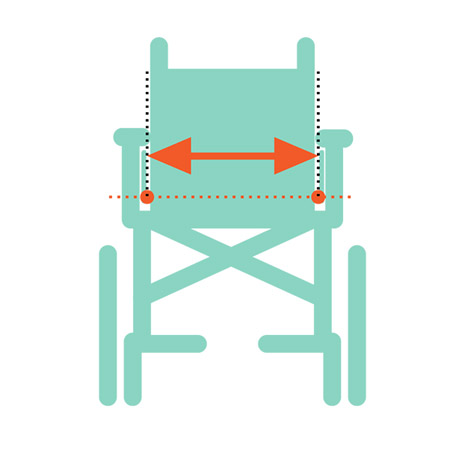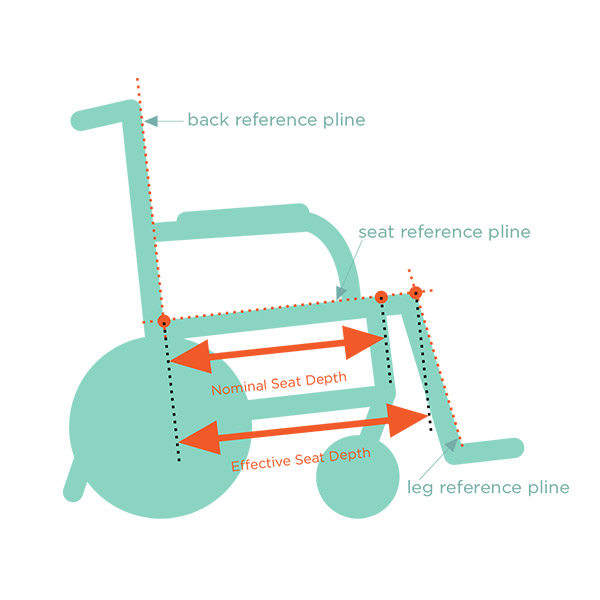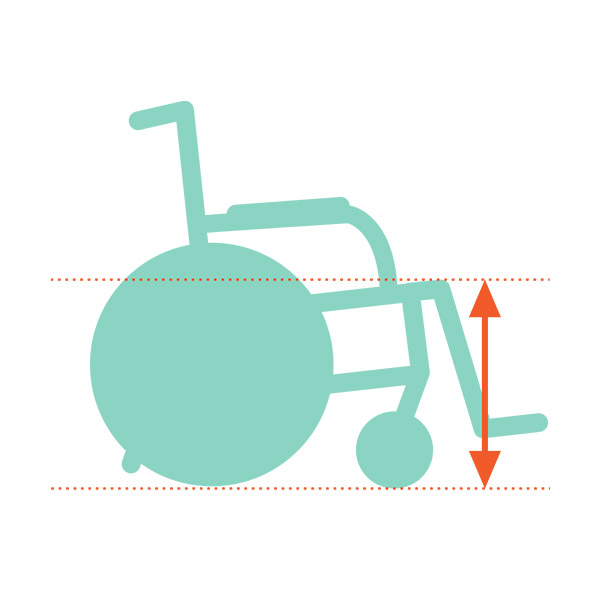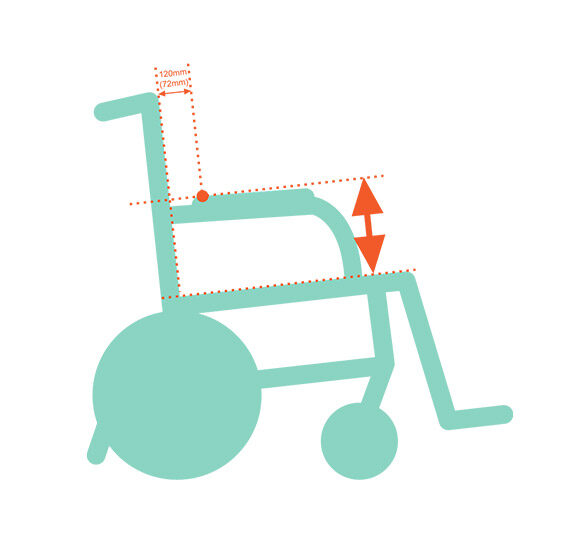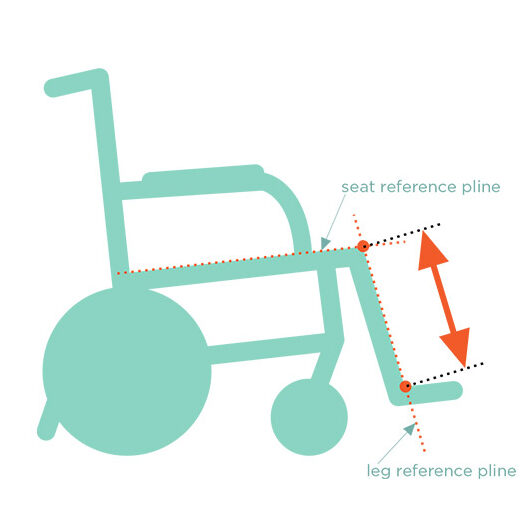
Why Is Wheelchair Sizing Important?
Choosing the right wheelchair size isn’t just about comfort—it directly affects mobility, posture, and long-term health. A well-fitted wheelchair can improve daily life, while an ill-fitting one may lead to discomfort or even injury. Here’s why proper sizing matters:
-
Prevent Health Issues:
A well-fitted wheelchair eliminates pressure sores, improves circulation, and maintains proper spinal alignment, reducing muscle strain and discomfort.
-
Improve Maneuverability:
When your wheelchair is correctly sized, moving through doorways, navigating ramps, and self-propelling becomes effortless.
-
Enhance Comfort and Posture:
Proper back and seat support reduces fatigue, improves posture, and ensures pain-free mobility throughout the day.
-
Boost Confidence and Independence:
A wheelchair that fits well allows you to move freely and engage in daily life without restrictions.
If your wheelchair is causing discomfort, is difficult to maneuver, or feels unstable, it’s time to focus on getting the right fit.
Further Reading:Wheelchair Related Injuries From Choosing the Wrong Wheelchair
Key Wheelchair Measurements and Their Impact
Understanding wheelchair measurements is essential for selecting the right fit. Here are the most important factors to consider:
Seat Width: The Foundation of Comfort
A proper seat width prevents pressure points and enhances stability.
- Too narrow? Causes discomfort and pressure sores.
- Too wide? Leads to poor posture and difficulty maneuvering.
Solution: Measure hip width and add 1–2 cm for the perfect balance between comfort and support.
Seat Depth: Ensuring Proper Leg Support
Your seat should fully support your thighs without restricting movement.
- Too short? The legs don’t get proper support, leading to fatigue.
- Too long? Puts pressure on the knees, affecting circulation.
Solution: Measure from your back to the back of your knees and subtract 2–3 cm for an optimal fit.
Seat Height: Proper Leg Positioning and Foot Support
Seat height affects how your feet rest on the footrests and how easily you can propel yourself.
- Too high? Feet dangle, causing circulation issues.
- Too low? Knees sit too high, leading to discomfort.
Solution: Ensure feet rest flat on footrests with knees at a natural angle.
Backrest Height: Finding the Right Balance Between Support and Mobility
The right backrest height supports posture while allowing freedom of movement.
- Low backrests provide more upper body mobility, ideal for active users.
- High backrests offer better spinal support, recommended for users needing extra stability.
Armrest Height: Preventing Shoulder Strain
Armrests that are too high or too low can cause shoulder fatigue and poor posture.
Solution: Ensure armrests allow your elbows to rest comfortably at a 90-degree angle.
Footrest Height: Supporting Natural Leg Positioning
Proper foot placement is key to reducing strain on the knees, ankles, and lower back.
- Too high? the knees are bent at an unnatural angle, leading to discomfort and poor circulation.
- Too low? the legs may dangle or drag, causing instability and increased fatigue.
Solution: Adjust the footrest height so the feet rest flat with knees at a comfortable 90-degree angle, ensuring proper weight distribution and reducing joint stress.
Overall Wheelchair Dimensions: Maneuverability in Any Space
Your wheelchair should fit seamlessly into your environment, from doorways to vehicles.
Solution: Measure door frames, hallways, and storage areas to ensure smooth navigation.
Ensuring a Wheelchair Fits Your Lifestyle and Environment

Beyond the user’s physical needs, it’s crucial to consider how the wheelchair fits into daily routines and spaces:
Navigating Daily Environments Without Barriers
Doorway Widths
Standard doorways range from 28-32 inches, while most wheelchairs are 24-27 inches wide. If you’re using a wider wheelchair (e.g., heavy-duty models), ensure doorways can accommodate it or consider doorway widening solutions.
Ramp Compatibility
Check your wheelchair’s width, wheel size, and weight capacity align with the incline and dimensions of ramps. Power wheelchairs and heavy-duty models may require stronger traction and braking control for safe ramp navigation.
Vehicle Transport
If you frequently travel, your wheelchair should be easy to transport and store.
- Foldable or quick-release models fit easily into cars or storage spaces.
- Lightweight wheelchairs are ideal for users who need to lift or transport their chair frequently.
- Power wheelchairs with compact frames ensure a smooth fit in public transport, vans, or airplanes.
Choosing the Right Cushion for Comfort and Support
Sitting for extended periods requires proper pressure distribution to prevent pain, discomfort, and pressure sores. A high-quality cushion is essential for:
- Long-Term Comfort – Reduces pressure buildup and supports posture.
- Spinal Alignment – Prevents slouching and reduces lower back strain.
- Improved Circulation – Ensures even weight distribution to prevent discomfort.
Find the Perfect Wheelchair for Your Needs
Your wheelchair should give you freedom, comfort, and confidence—not frustration. Choosing the right size means enhanced mobility, better posture, and long-term well-being.
Need expert guidance? At Karma Mobility Thailand, we don’t just import and sell, we produce and support locally. Most wheelchairs are manufactured in Korat, and our dedicated Bangkok-based service and marketing team is here to guide you every step of the way. For further assistance in choosing a wheelchair at Karma Mobility Thailand, contact us.
Frequently Asked Questions about Wheelchair Dimension
Q: How do I know if my wheelchair seat width is correct?
A: Your seat should be just wide enough to support your hips with 1–2 cm of space on either side. If it feels tight or your arms push outwards, it may be too narrow. Too wide, and you may slide or lean to one side.
Q: What are signs that my wheelchair seat is too deep or too shallow?
A: If the seat is too deep, it can press against the back of your knees and cut off circulation. If too shallow, your thighs won’t be fully supported, leading to fatigue. Measure from your lower back to the back of your knees and subtract 2–3 cm.
Q: Why is professional wheelchair fitting important?
A: Even if your measurements seem right, a mobility expert can assess your posture, movement style, and pressure points to fine-tune your setup. A professional fitting helps prevent long-term strain, pain, or injury.


